“In 1921, at a combined mustering camp, which was the custom in those days, a number of stockmen from stations including Mt Augustus, Erravilla, Milgun, and Landor were having a day off. They began a discussion about who had the fastest horses. And so began the tradition.” Don Hammarquist, President East Gascoyne Race Club, Opening Address Centenary Landor Races, October 2021.
“I think people keep coming back to Landor because if I was to reach down and do that, you know, it’s the dirt. It gets between your fingernails and into your fingers, every grain in your body.” Simon Broad interview on Ladbroke video “The Landor Cup -in the middle”
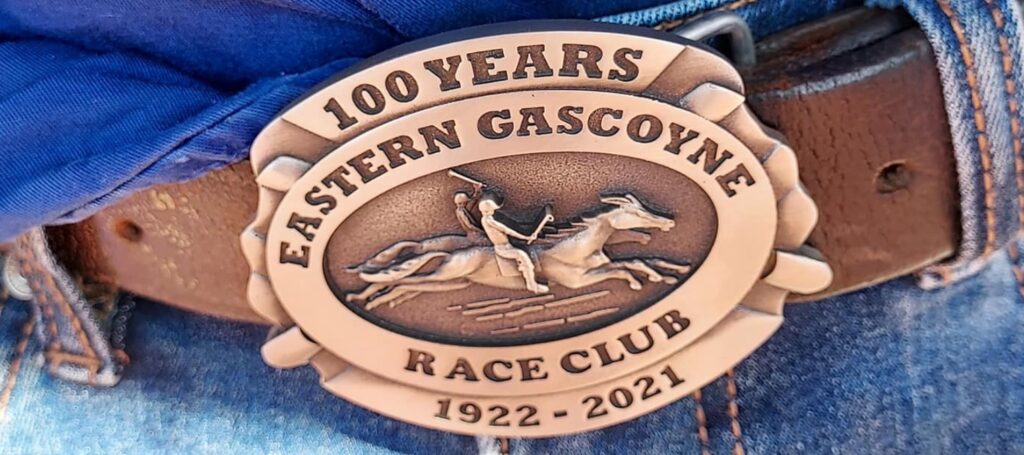
It started something like this:
Craig: “We’re off to the Landor Races”.
Me: “Oh yeah”, feigning some level of local knowledge. Knowing that Craig was a horse trainer, I enquired a little further. “How many horses are you taking?”
Craig: “I’ll be taking six racers and a couple of riders.”
The conversation ended there, but afterwards, I tried to look up Landor on the map. Nothing. The next day I saw Craig again.
Me: “Where is Landor?”
Craig: “About a 12-hour drive away. The nearest town is Meekatharra, some 270 kilometres away from Landor”.
Me: “So what’s at Landor?”
Craig: “Nothing, just the racetrack”.
I stewed on that, trying to compute in my head why would you travel so far with your racehorses to a race meet in the middle of nowhere? At least when you go to the iconic Birdsville Races, you are heading to a town and the pub. So I did some research and what I found out is a remarkable five-day festival held over the middle weekend of the October school holidays that celebrated its centenary this year. Everyone associated with Landor Races considers it the centre of the universe every October.
This annual event has a long and proud history. It is run by the Eastern Gascoyne Race Club and held at a “racecourse” located on Mt James Station in the Gascoyne region of Western Australia. The first event was born in 1922, and it has been running ever since. It is the only surviving bush race meeting in the state. Unlike other country race meets In Australia, such as the Birdsville Races or the Wallabadah Cup, this is truly a bush race meeting with generations of local station families attending. The Landor Races brings the local community from the stations and people from afar together to create a camaraderie – a unique experience in a paddock in the middle of nowhere.
It has a colourful history with an authentic outback flavour. However, this is not any ordinary desolate outback paddock. As well as the racetrack itself, there are a number of permanent facilities such as horse stables, a covered grandstand, dance hall, kitchen and dining room, bar and betting ring. Remarkably, they are only used twice a year. The other time, is when the committee holds a week-long working bee in April or May.
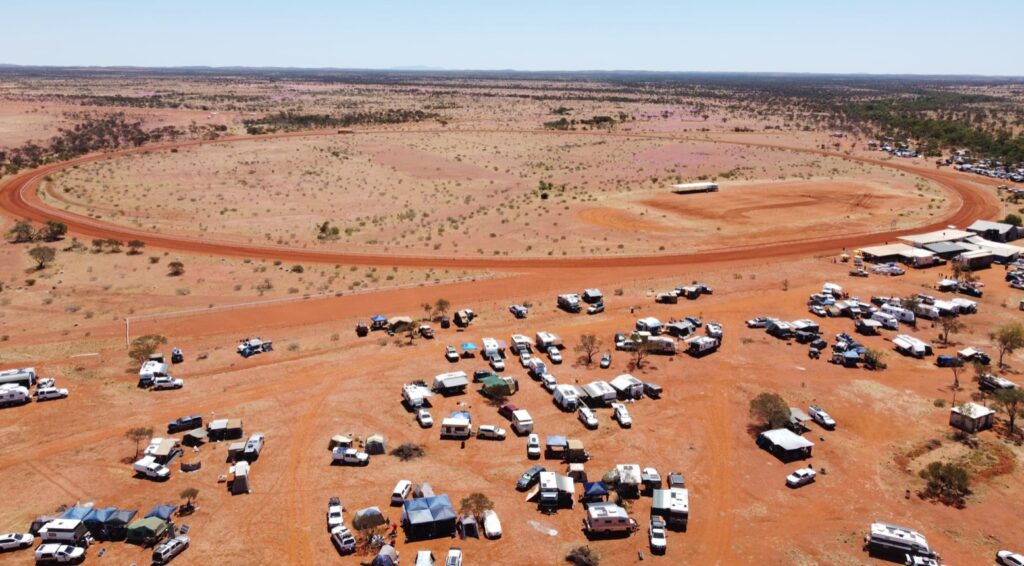
The campground has two sections. The one area along the creek is the traditional campsites with tin sheds reserved for the station owners that have occupied those sites through family generations for over 80 years. They have created a unique atmosphere among themselves using the opportunity to hold week-long family holidays. Names include Woods, Blood, Brownlie, Walsh, Watters, Power, Forrester and Hammerquist. Station names such as Woodlands, Landor, Mt Augustus, Mt Clere, Mt Gould, Murchison, Yarlarweelor and Milly Milly all occupy pride of place in this area. The main camping area is generous with ample toilet and showers facilities. Boilers fuelled by firewood heat water for the showers.
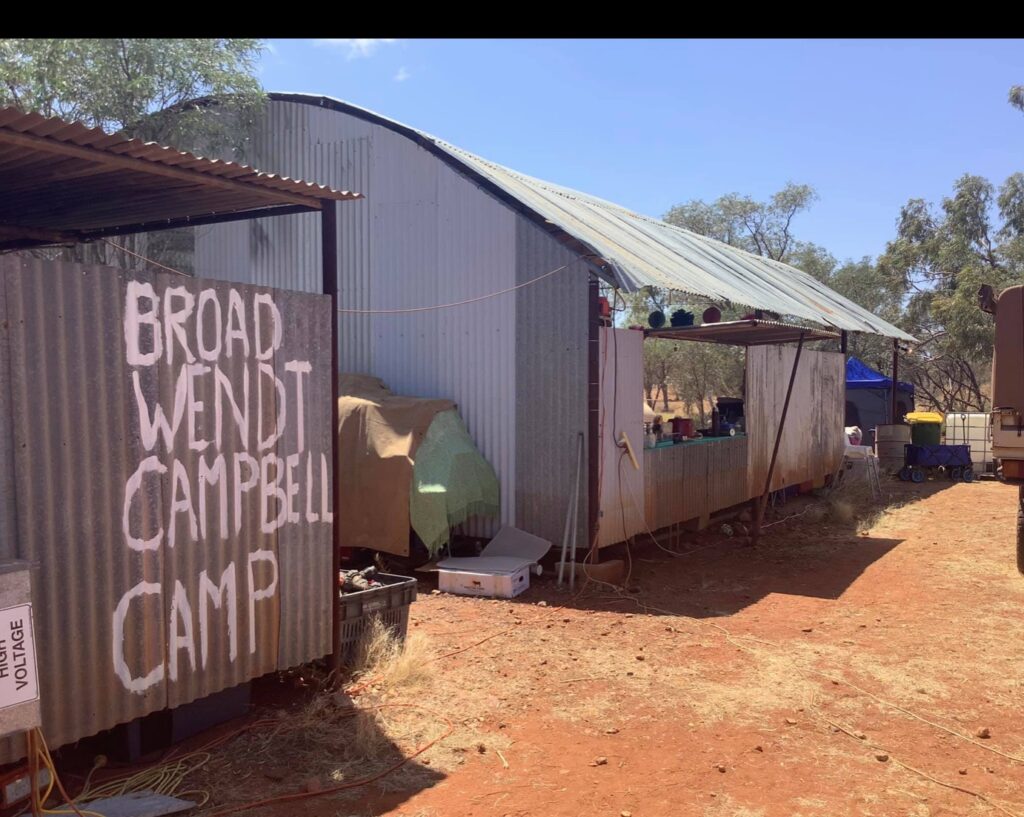
How the races started is a story in itself. Pioneer settler and Englishman Robert Bush took out leases in the Gascoyne district. He bought Mt Clere and Erravilla stations and named the two million acres Upper Clifton Downs. When a new land act prevented pastoral properties in the north-west from exceeding one million acres, it was decided to split the farm into two companies to own one station each, effectively dividing Upper Clifton Downs in half. The western half became Landor station with its headquarters on the Aurillia Creek. The eastern half came under Mt Clere Pastoral Company.
After World War I, many returned servicemen took up soldier’s grants in the vast and undeveloped outback. They were resourceful and excellent horsemen, some serving in the Light Horse Brigade. They lived for horses, and any spare time they had, they were training and grooming their hacks for fancy stockwork. Horses were a big part of station life after the war. There was a passion and rivalry in racing horses at bush race meetings.
Eric Russell, whose father owned nearby Milly Milly, was asked by Bush to manage Upper Clifton Downs. He built the new Landor homestead after the break-up of the property, located opposite flats that he thought would make a great racetrack. Russell’s mother was an avid horse fan, and it was decided to hold a couple of races in her honour, run on the new racetrack opposite the Landor homestead. The initial unregistered race meeting in 1921 led to the running of the Landor Races in the middle of nowhere and the formation of the East Gascoyne Racing Club. So began an annual party with 200 guests and a few racehorses. The wives revelled in the social opportunity to lighten their isolated lives.
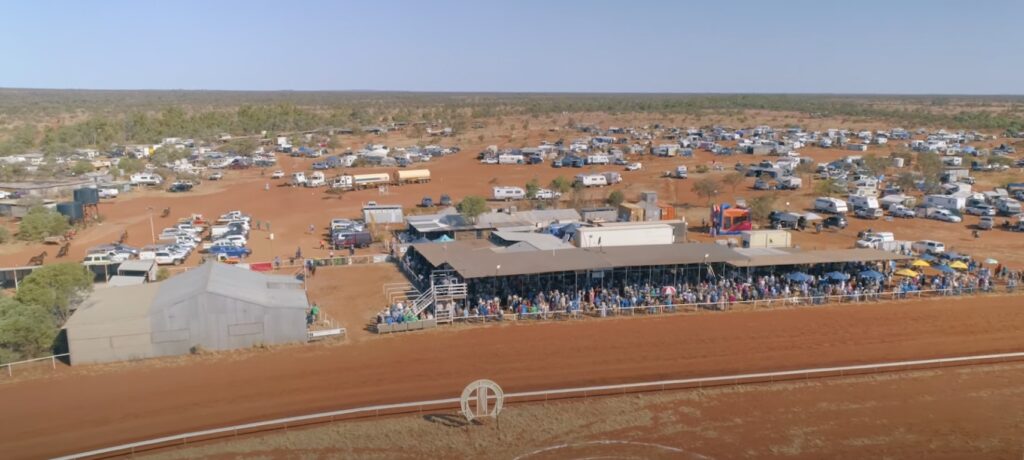
The racecourse was relocated to its current location at Mt James Station in 1933, some 22 kilometres north of the Landor homestead, on the Mt Augustus Road. In those days, the horse dominated station activities. And while the Landor Races were for “grass-fed hacks” and ridden by station hands, it was still an integral part of the annual social calendar. Even today, where horses on stations are fewer, racing regulations are tighter, and people are more dispersed, the yearly pilgrimage to Landor continues unabated. For the station folk, it is one of few opportunities in the year to catch up.
The main feature of the Landor Races was designed to pit local horses against each other. Ernest Potts of Mt Augustus advocated this when playing a part in the formation of the racing club, writing “only for horses at present on surrounding stations, and grass-fed”. Indeed, in the early years, races were restricted to horses owned by those in the district and connected to pastoralism. When a grass-fed meeting was declared, trainers could not feed or handle their horses until six weeks before the meeting. In dry or drought years, a corn-fed meeting was declared, and there was no restriction on the length of time a horse could be yarded and fed. Over the years, more trainers brought their horses from further afield, so it was decided in 2007 to hold corn fed meetings every year.
The format of the event has changed over the years. These days, festivities get underway officially on Friday, although many arrive on Thursday and settle in. On Thursday night, long-standing station family members entertain guests with stories over a sausage sizzle. Friday night sees two-up games after the bar opens, followed by music and dancing.
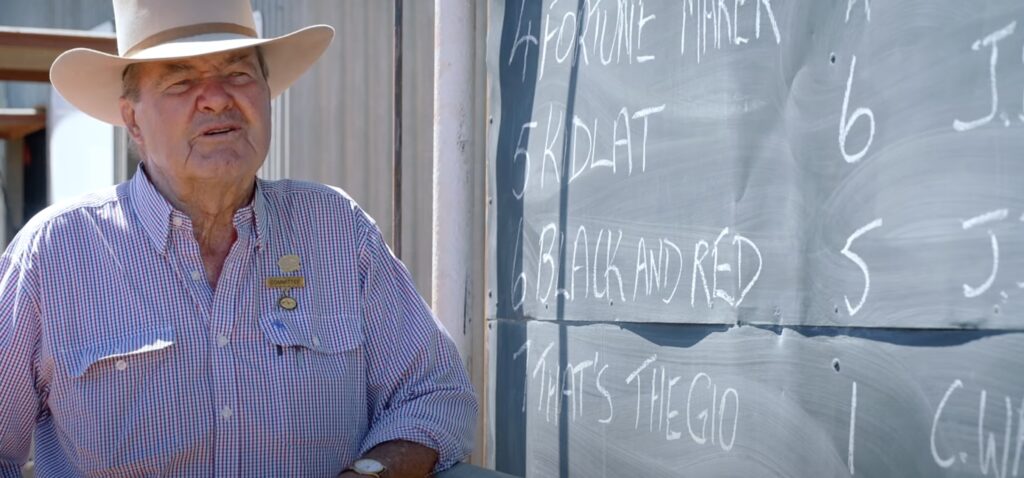
The races start on Saturday – Ladies Day. The first race has usually always been a maiden – only for horses that have never previously won a race. Since 1998, the Mt Augustus Maiden has honoured the station that has supplied many characters indelibly associated with the Landor Races. Saturday’s feature race is the Ladies Bracelet. All runners in that race had to nominate under a women’s name. Over the years, this has meant some younger teenagers have been very successful horse owners! Several Bracelet winners coincidentally had a father who mysteriously owned the same horse for other races. The Saturday night features the Outback Ball, where people get dressed for the nominated theme.
Sunday is the traditional and fiercely contested Gymkhana day as the Landor Races always aimed to provide sports other than horse racing. Kids “lead on” events are held in the morning, followed by the adult events in the afternoon. The fun events such as Tug-of-war and various races for everyone are held afterwards.
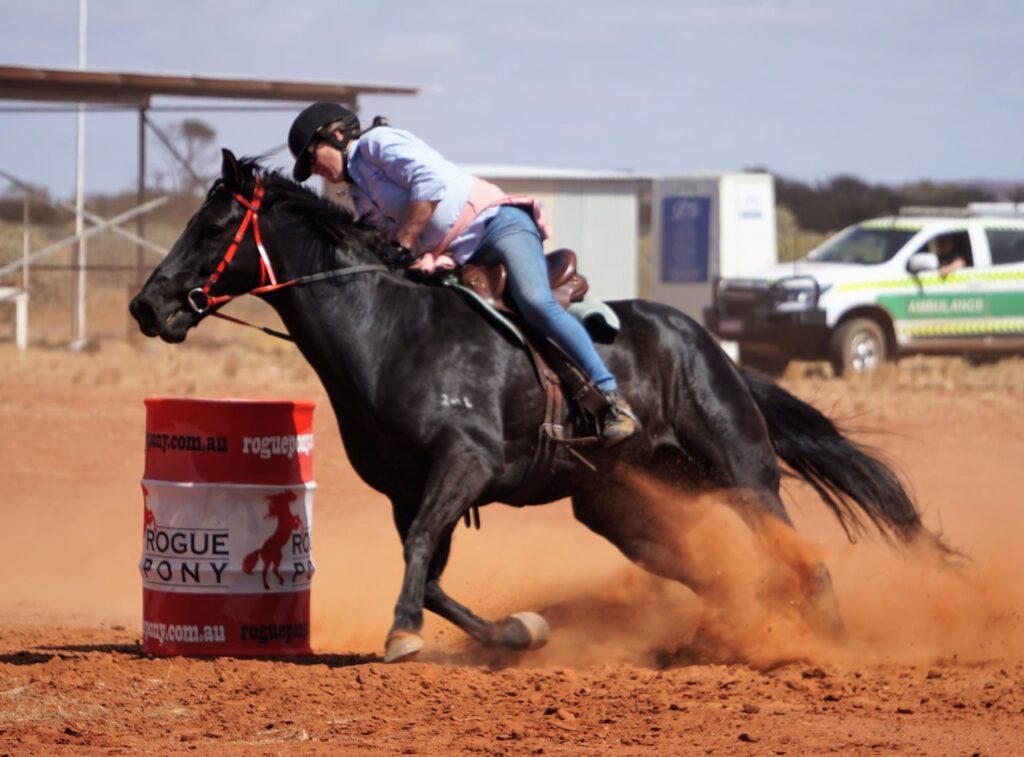
Racing continues on Monday with the running of the Landor Cup as the feature race. It is perhaps fitting that while Landor station is no longer where the races are held, Landor Station’s horses won the Landor Cup five years straight from 1923, a feat unrivalled by the other participating stations.
The changing safety and racing regulations have continually proved to be a challenge for the committee trying to maintain the unique and pleasurable focus of the event. The requirement that all horses competing had to be registered thoroughbreds was particularly controversial. This specific requirement led to much angst since the station horses were primarily used for mustering. It led to a new category of “open” horses for horses bred outside the district that don’t get involved in any mustering activities.
However, some traditional practices remain, keeping with their amateur status. There are no starting barriers, and the races start with a walk-up controlled by the race starters on horseback, roughly setting the start line. Registered jockeys are not allowed to ride the horses. Jockeys must be licensed track riders and must have approval from the Steward to ride. There are no photo finishes – the job of adjudicating is left to the watchful eyes of three judges.
Landor remains a popular racing event for amateur and aspiring trainers. Take, for example, Ryan Murphy, who has never been a career horseman. He was at the Landor races in 2011 as an observer and reveller in the festivities. The following year, he entered a horse and won the Landor Cup. He has gone on to win races at Carnarvon and is building his professional horse training credentials.
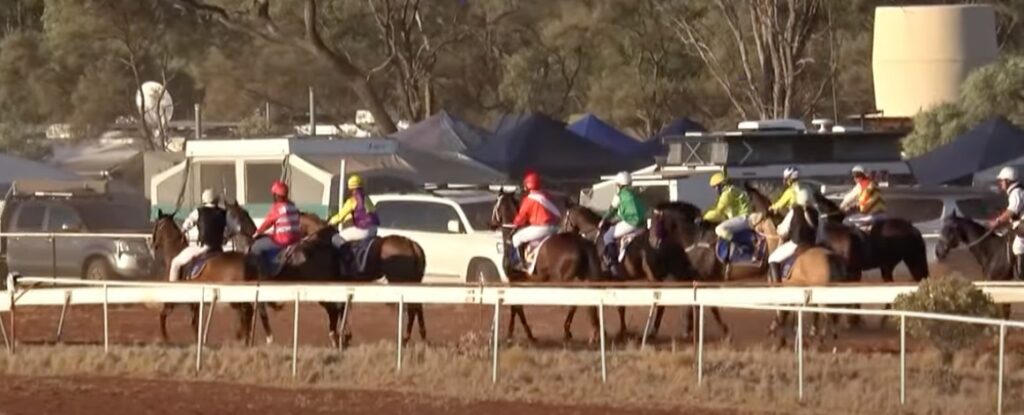
During my stay at Geraldton, I was fortunate to meet a number of the Watters family who have been closely associated with the races. Jim is the patriarch and has been going to the races for over 40 years. At this year’s event, he was given the honour of Life Membership of the Gymkhana club for his services over the years. His son Rodney is a truck driver who carted three trailer loads of equipment, grog and ice for the event from Geraldton. Daughter Sandy is the current secretary of the racing club who worked tirelessly with the hard-working committee to organise the annual event. This year’s centenary event had nearly 2,000 people attend, and ticket sales were closed off to limit the numbers.
Jim’s eldest son, Gregory, is also a Life Member and current owner at Mt Clere station. He married Jenny from another well-known Landor station family, the Forresters. The couple have been great contributors to the races over the years, and they are two of the few locals still involved with the club. I also met Steve Kidd briefly. He is the son of Sergeant Kevin Kidd, who was stationed at Meekatharra. At six foot eight, he was an authoritative figure and well known throughout the district. The local constabulary is always present to help keep things in order.
The Craig I had the initial conversation with is Sandy’s husband. One of his pursuits (as well as being a builder and farmer) is a horse trainer. He proudly showed me the feature photos of his horse Samolek, one of only three horses to win the Landor Cup in three consecutive years in 2005-07 (sharing the feat with Royante in 1924-6 and Maltese in 1982-84).
Craig also has a long association with the racing club, including a stint as President, and was awarded a Life Member in 2014. He is also part of an embarrassing event in 2017. After arriving at Landor on a Wednesday to help set up in preparation for the event, Craig decided to give his horses a run in the yard after their long journey. Sandy asked if all the gates were closed. Jim scanned the paddock with his eyes and said yes. The only problem was they weren’t, and the horses fled into the open when released. Craig had to call in the air wing, and they were all finally rounded up the next day. Sandy wasn’t impressed because Craig was focused on retrieving his horses instead of helping with the set-up. Needless to say, Craig still managed to win the Landor Cup that year with Ten Outa Ten. Maybe that extended overnight run helped.
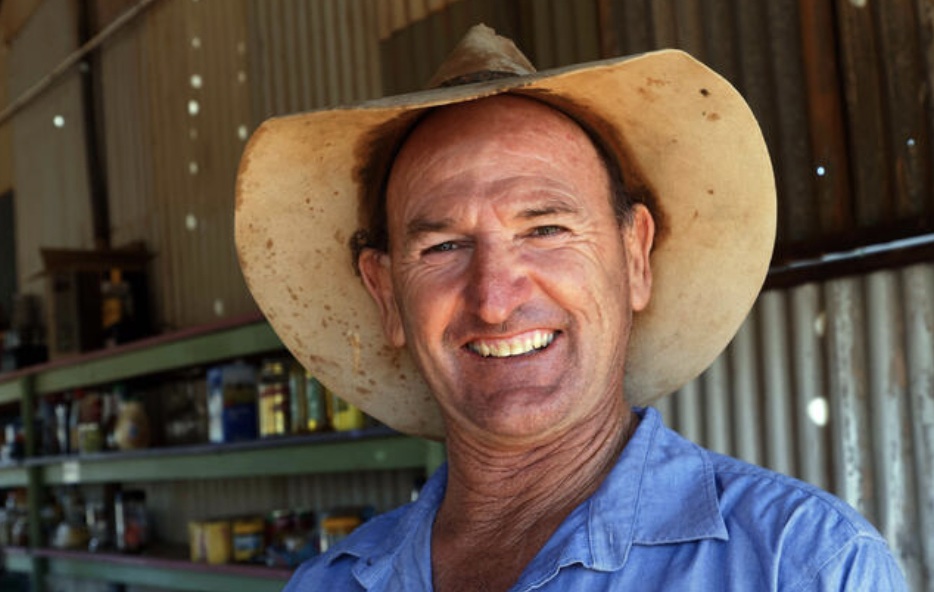
Landor Races has a culture difficult to appreciate until you have been there. I haven’t yet, but I would love to attend after hearing and reading so much about this fantastic event. It not only attracts people who enjoy race meetings. It attracts a mixture of salt of the earth people, mad punters and socialites who love a party in the bush. They all participate in the revelry that such an experience provides. They mix with the traditional station families, who are the glue that keeps the races as an enduring social occasion and continue to add layers to its fascinating history.
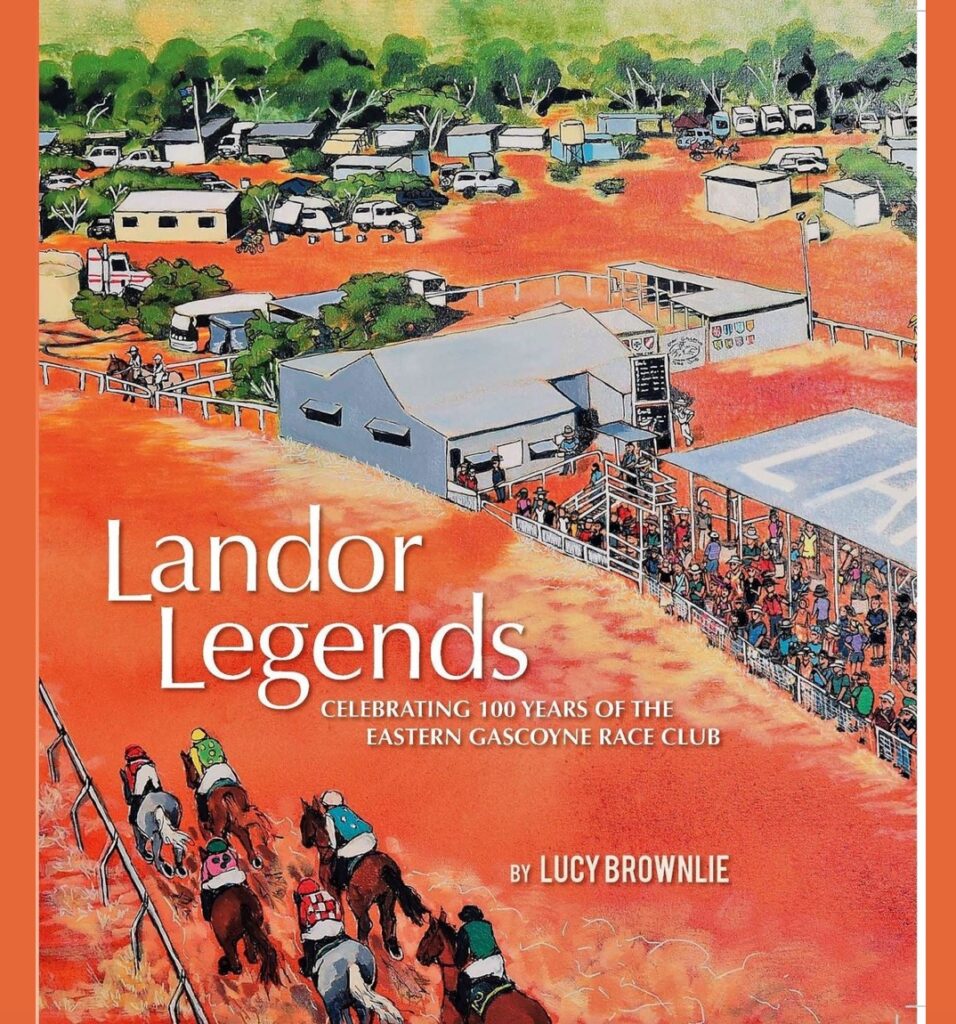
Lucy Brownlie has just published a historical account of Landor Races called “Landor Legends: celebrating 100 years of the Eastern Gascoyne Race Club”. As a fellow author I am very impressed by the layout and quality of the book, and it is a great read. She was ably assisted by the club’s long-serving historian Lorraine Sartori. Anyone interested in purchasing the book can contact Lucy directly on 0408591119.
Also, you may enjoy the professionally produced video of last year’s Centenary Race event by Ladbroke called “The Landor Cup – in the middle” – https://www.youtube.com/watch?v=_matf_XtuVw
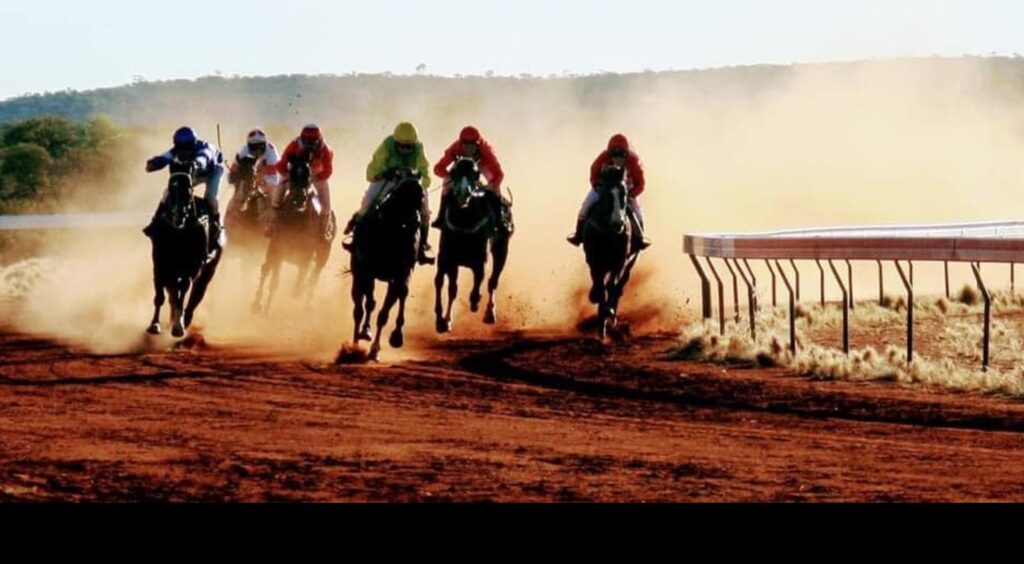
A great read!
Thanks, Rob, for uploading this historical piece of history.
I thought I knew where most race tracks were situated, but I hadn’t heard of this one.
Cheers